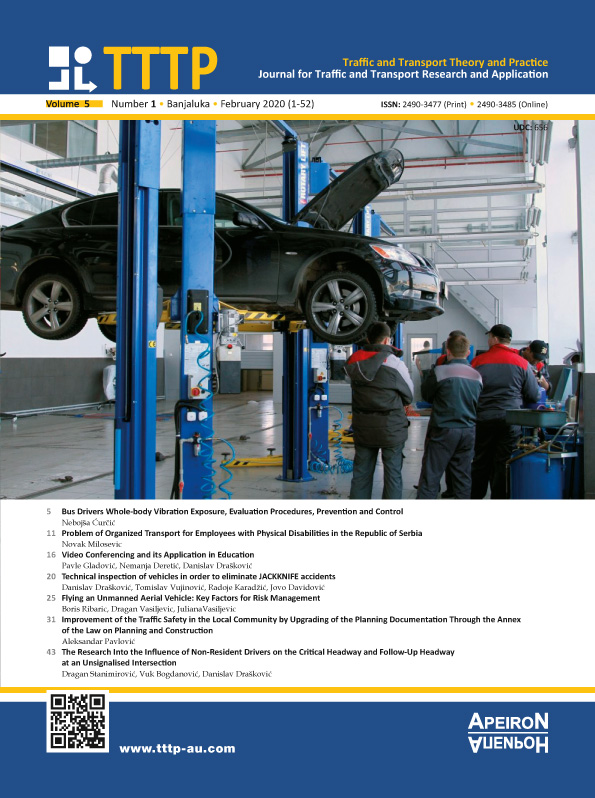Bus Drivers Whole-body Vibration Exposure, Evaluation Procedures, Prevention and Control
DOI:
https://doi.org/10.7251/JTTTP2001023CAbstract
Public transport bus drivers are exposed to a wide range of hazards which can endanger their occupational safety and health. Risks of possible traffic accidents, stress (due to traffic jams, pace of work, conflicts with passengers and other road users, etc.), fatigue, long sitting hours, vibration, noise, exposure to air pollution, adverse microclimatic conditions are just some of the factors that can endanger a driver’s health and are characterized by a different likelihood of occurrence and consequence severity. Whole-body vibration transferred to human over many years of exposure have the potential to endanger health with respect to the onset of musculoskeletal disorders, especially in synergy with prolonged sitting. In addition, whole-body vibration exposure is a possible source of discomfort, which, combined with other factors, can contribute to the negative effect on the general physical and mental state of the driver, and therefore the occurrence of fatigue and stress.
In order to manage the exposure of bus drivers to vibration, it is necessary to evaluate the exposure, using methodologies defined by international standards, based on expert analysis and measurements. The paper presents the dominant health risks arising from the whole-body vibration of professional bus drivers, the parameters of exposure evaluation, measurements and evaluation procedure in accordance with European Directive 2002/44/EC and ISO standards, as well as an overview of the precautions to be taken in to reduce the risk associated with bus drivers occupational whole-body vibration exposure.
